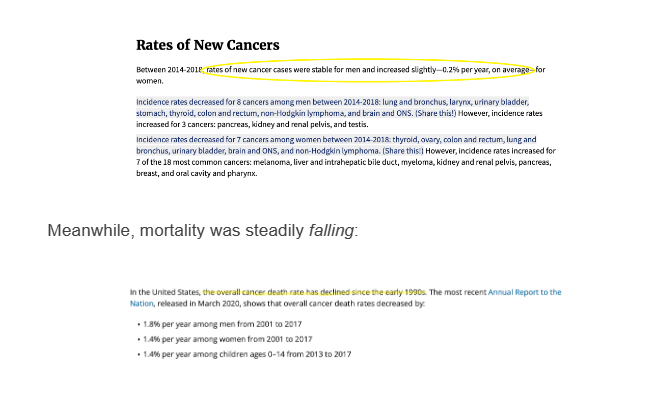PFIZER’S GOLDEN GOOSE BUSINESS MODEL
This is really “Something” …again from Jeff Childers ….Evil Pricks !
……………..
Last week the pharmaceutical industry trade press ran a huge, hair-raising story largely ignored by corporate media. BioProcess International ran it on Thursday headlined, “Done and Dusted: Pfizer completes $43bn Seagen deal.”
Seagen (stock ticker SGEN) owns 25 FDA-approved high-tech cancer drugs — especially aggressive, treatment-resistant types of cancer. The deal was first announced back in March, but has been awaiting regulatory approval. Here’s how Bloomberg then described Seagen:
Seagen is a leader in developing a type of medicine called antibody-drug conjugates, or ADCs. These precision medicines deliver cancer-killing drugs so potent they might otherwise be too toxic to use. The delivery mechanism uses antibodies to deposit a strong concentration of drug directly at a tumor site, which may increase efficacy with fewer side effects. Seagen’s portfolio will double Pfizer’s pipeline of early-stage experimental cancer therapies, the company said.
ADC’s combine two existing technologies: monoclonal antibodies and chemotherapy. In summary, a little bit of toxic chemotherapy is sprinkled into an antibody that mostly targets cancer cells. Once the antibody reaches the cancer, in a mechanism that is not entirely clear to me it smashes the poison pellet against the cancer cell’s wall, the cell eats the poison, and then dies
Because ADC antibodies are designed for cancer cells, they mostly avoid poisoning people’s healthy cells. Because of this targeted approach, ADCs reportedly have fewer and less severe side effects and can risk using stronger poison compared to traditional chemotherapy.
No pun intended, cancer is a growth market. You might even call it the new gold rush. Pfizer CEO Albert Bourla did. In a call with financial reporters, Bourla literally described buying Seagen as “buying the goose that lays the golden eggs:”
“We think this really changes dramatically the oncology presence of Pfizer and makes it one of a kind,” Bourla said on a call with analysts. “We aren’t acquiring the golden eggs, we are buying the goose that lays the golden eggs.”
image 8.png
Seagen is the goose, cancer is the golden eggs, and we have to eat the eggs.
Ominously, Businesswire quoted Bourla explaining that, for some reason, Pfizer expects a THIRD of us to get cancer. (I tried, but could find no official source supporting his figures.):
“Cancer remains a leading cause of death, and one in three people in the U.S. will receive a cancer diagnosis in their lifetime. With one of the largest investments in Pfizer’s history, we are going all in on cancer with the goal of delivering breakthroughs that drastically improve the lives of people with cancer,” said Dr. Albert Bourla, Pfizer Chairman and Chief Executive Officer. “We believe Oncology will be a significant growth driver for Pfizer.”
That mind-blowing number (33%) is also coincidentally half of the number people who got the shot (67%). Just saying.
There were several remarkable features of Pfizers’ acquisition of Seagen:
Pfizer paid an astounding $43 billion for the cancer drugmaker — over 98% of what Elon Musk paid for Twitter ($44 billion).
Actually, Pfizer paid more than $43 billion, maybe a lot more. To “resolve” the FTC’s concerns with the deal, Pfizer also agreed to donate all future U.S. royalties from its cancer drug Bavencio (avelumab) to the American Association for Cancer Research. (Somebody should check who the FTC just made rich over at the AACR.)
It was the largest pharma acquisition of any kind since 2020.
Seagen was only valued at $14 billion, at most. Pfizer paid more than three times Seagen’s closing price per share, not including the other deal elements.
As I mentioned, Seagen’s drugs are designed to treat resistant turbo cancers.
Below you’ll see Seagen’s young (former) CEO, William Canestaro, now an involuntary billionaire. Various articles reported Canestaro opposed selling to Pfizer, which could explain the outrageously high sale price. (I couldn’t find a source explaining why Canestaro opposed selling.)
Before it vanishes into the Internet’s circular file, the National Cancer Institute’s web page still says that, before 2020, cancer rates were steady and mortality was *steadily decreasing.* Don’t let them gaslight you into thinking they’ve been on the rise for decades.
Before 2020, new cancer rates were stable, not growing, and were decreasing for many types of cancer including lung cancer, brain cancer, and non-Hodgkin lymphomas:
For some unexplained reason, the NCI last updated its cancer statistics on September 25th, 2020 — right before the jab campaigns started — and has not updated them since. One wonders on what the NCI’s statistics office’s budget has been spent for the last three+ years.
A really lucrative business model occurred to me while I was writing this up. Purely hypothetically, you could sell a defective — but liability-free — product to two-thirds of Americans, which would create some horrible problem for about a third of them. Then you could make a bunch of fabulously expensive, fully-patented, unimaginably-profitable high-tech products to deal with the very problems that the first product created. (And you’d really start making money when sold your patented solutions to the rest of the world who also bought your first defective product.)
Of course, you would have to be downright evil to go for a business model like that, but hey.
……….
here is the link to C and C in case you would like to read the comments…this guy is a Legand and an Institution now




